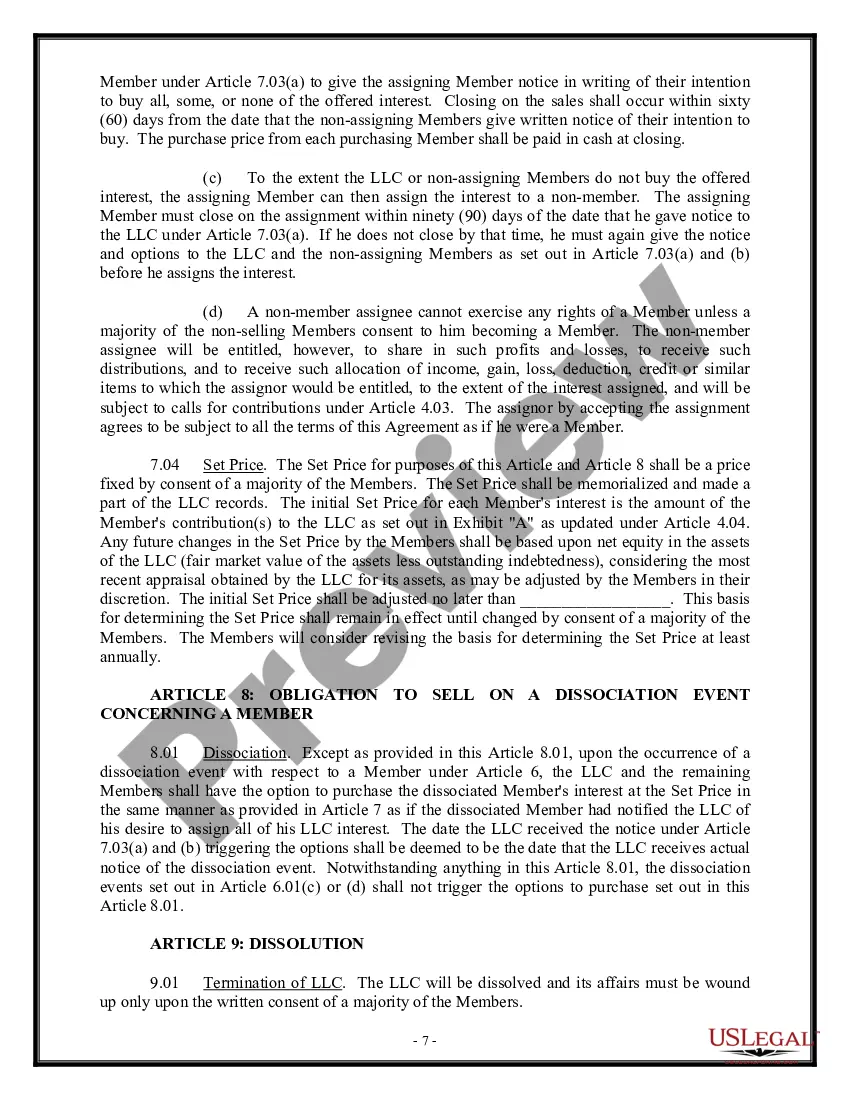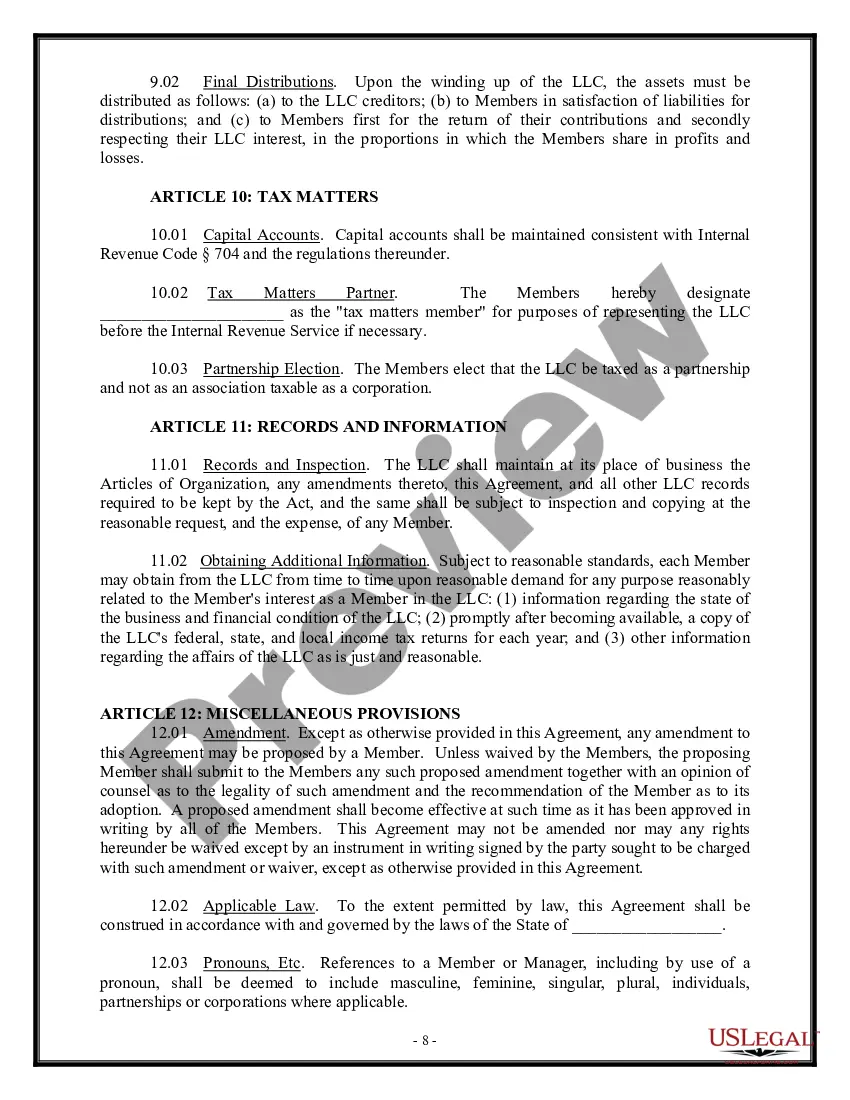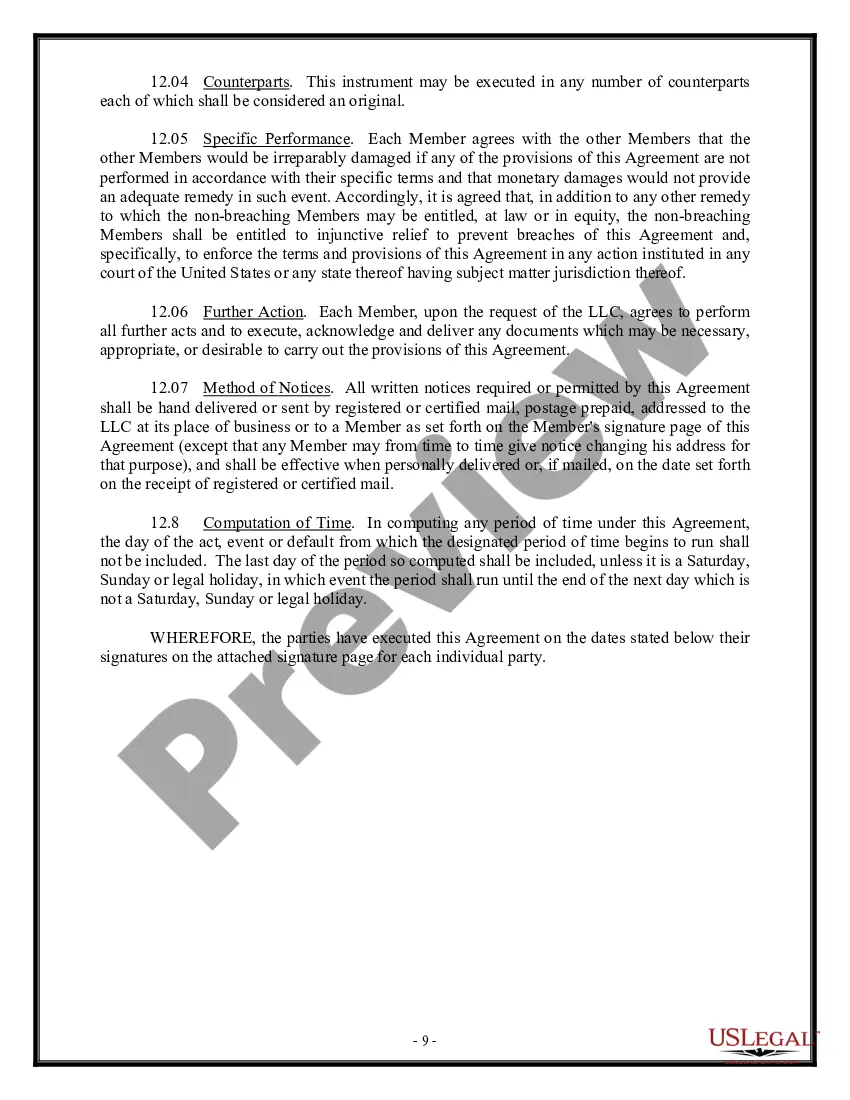Hawaii Limited Liability Company LLC Operating Agreement
Description
How to fill out Limited Liability Company LLC Operating Agreement?
Are you presently within a place the place you will need files for sometimes enterprise or individual reasons almost every day? There are plenty of authorized document templates available on the net, but finding ones you can rely isn`t easy. US Legal Forms offers a large number of kind templates, like the Hawaii Limited Liability Company LLC Operating Agreement, that are written in order to meet state and federal specifications.
When you are presently familiar with US Legal Forms site and possess a merchant account, basically log in. After that, you may download the Hawaii Limited Liability Company LLC Operating Agreement web template.
If you do not come with an profile and wish to start using US Legal Forms, abide by these steps:
- Obtain the kind you require and ensure it is for your right area/state.
- Utilize the Preview switch to analyze the shape.
- Browse the outline to ensure that you have chosen the appropriate kind.
- If the kind isn`t what you`re searching for, utilize the Search industry to find the kind that fits your needs and specifications.
- When you discover the right kind, click Acquire now.
- Pick the costs program you would like, complete the desired information and facts to make your account, and buy an order making use of your PayPal or Visa or Mastercard.
- Choose a convenient document format and download your backup.
Get every one of the document templates you have purchased in the My Forms food list. You can obtain a further backup of Hawaii Limited Liability Company LLC Operating Agreement whenever, if needed. Just go through the needed kind to download or print out the document web template.
Use US Legal Forms, probably the most substantial variety of authorized types, to save efforts and steer clear of blunders. The assistance offers appropriately produced authorized document templates that you can use for an array of reasons. Generate a merchant account on US Legal Forms and begin generating your way of life easier.
Form popularity
FAQ
An operating agreement is a key document used by LLCs because it outlines the business' financial and functional decisions including rules, regulations and provisions. The purpose of the document is to govern the internal operations of the business in a way that suits the specific needs of the business owners.
Starting an LLC in Hawaii will include the following steps: #1: Choose a Name for Your Hawaii LLC. #2: Designate a Registered Agent. #3: File Your Articles of Organization. #4: Create an Operating Agreement. #5: Request Tax ID Numbers. #6: File Your Hawaii LLC Annual Report.
The LLC operating agreement, also known as an LLC agreement, establishes the rules and structure for the LLC and can help address any issues that arise during business operations. Most states have default provisions that address many of these difficulties, but the operating agreement can override these presumptions.
Hawaii does not require LLCs to have operating agreements, but it is highly advisable to have one. An operating agreement will help protect your limited liability status, prevent financial and managerial misunderstandings, and ensure that you decide on the rules governing your business instead of state law by default.
An LLC is a limited liability company. It is one of the most flexible entities and it is not a partnership or corporation. It is created by filing Articles of Organization with the Business Registration Division.
A Hawaii LLC Operating Agreement is a written contract between the LLC Members (LLC owners). This legal document includes detailed information about membership structure, who owns the company and how the LLC is managed.
Common pitfalls of a poorly drafted Operating Agreement include failing to: (i) specify what authority managers or members have; (ii) carve out key decisions that require a higher approval threshold (e.g., dissolution, sale of all or substantially all of the assets of the LLC, etc.); (iii) address how deadlocks in the ...





















